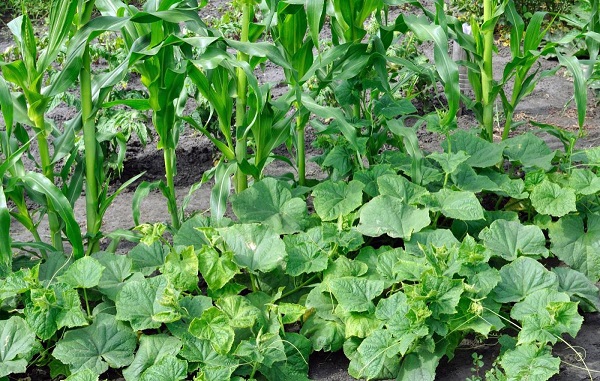
Now that Spring planting season is upon is, it is time to plan the vegetable garden. You may have already chosen what to plant this year, but have you decided where to plant those vegetable seeds and seedlings?
Traditionally a vegetable garden is planted in rows. When I helped my mother plant the garden, we used string tied to stakes to ensure that the rows would be nice and straight. One row for beans, another row for peas, more rows for lettuce and tomato plants. Each year, the garden looked pretty much the same.
The way I see it, a vegetable garden should be not only provide a feast for the dinner table, but also a treat for the eyes and an enjoyable place to spend an afternoon. A few changes in the garden can make it far more visually interesting. Instead of planting a row of lettuce, try planting lettuce in one or more blocks.
Prepare a seed bed by raking the soil to break up any clumps. Next, scatter the lettuce seed across the bed, then cover lightly with soil. As the lettuce sprouts, any plants that are too close together can be thinned out and used as baby greens for a salad. To make a lettuce bed even more attractive, mix several varieties of lettuce seed together before planting. A mixed bed of green leaf and red leaf lettuce is almost too beautiful to eat. Rather than making just one lettuce bed for the garden, make it even more interesting by planting a triangular lettuce bed in each corner of the garden. Wouldn’t that be pretty!
Some crops, such as peas and beans, are more manageable if they are planted in rows. But you can produce a larger crop if two rows are planted closely together. Begin by making two shallow trenches for the seeds, about six inches apart. Plant both rows at the same time but stagger the seeds within the rows.
You can also double-up with some crops. Plant pole bean seeds right along with corn seeds and then plant squash or pumpkins between the rows. These crops grow well together and were referred to by Native Americans as the three sisters. The pole beans will climb up the corn stalks, while the squash vines will sprawl amongst the plants. The beans will help replace some of the nitrogen that corn plants use so readily, and the squash vines will shade the earth and keep down weeds. The prickly squash vines will also deter hungry raccoons from stealing your sweet corn.
Onions and garlic make a great border around the edge of the garden or around groups of plants. Add some flowering annuals here and there amongst the vegetable plants too. Not only will it make the garden more beautiful, but flowering plants will also attract beneficial insects and pollinators to your garden. Mix it up a little and have fun with your vegetable garden!
Mike McGroarty is the owner of McGroarty Enterprises and the author of several books. You can visit his website at Freeplants.com and read his blog at Mikesbackyardnursery.com.
Related Articles & Free Email Newsletter
Finding Customers in Difficult Times
Growing Healthy, Productive and Profitable Plants through Succession Planting




Comment here